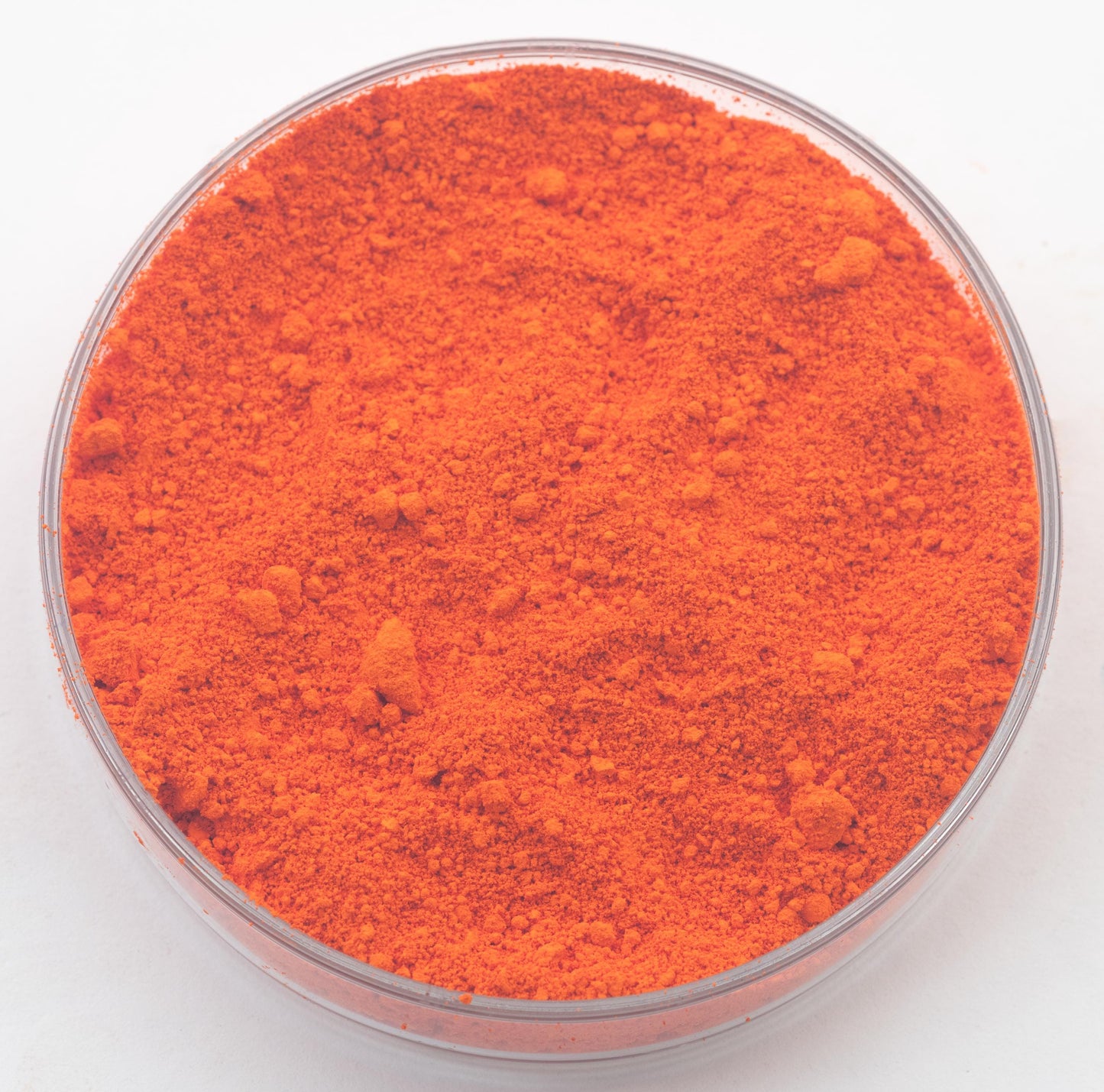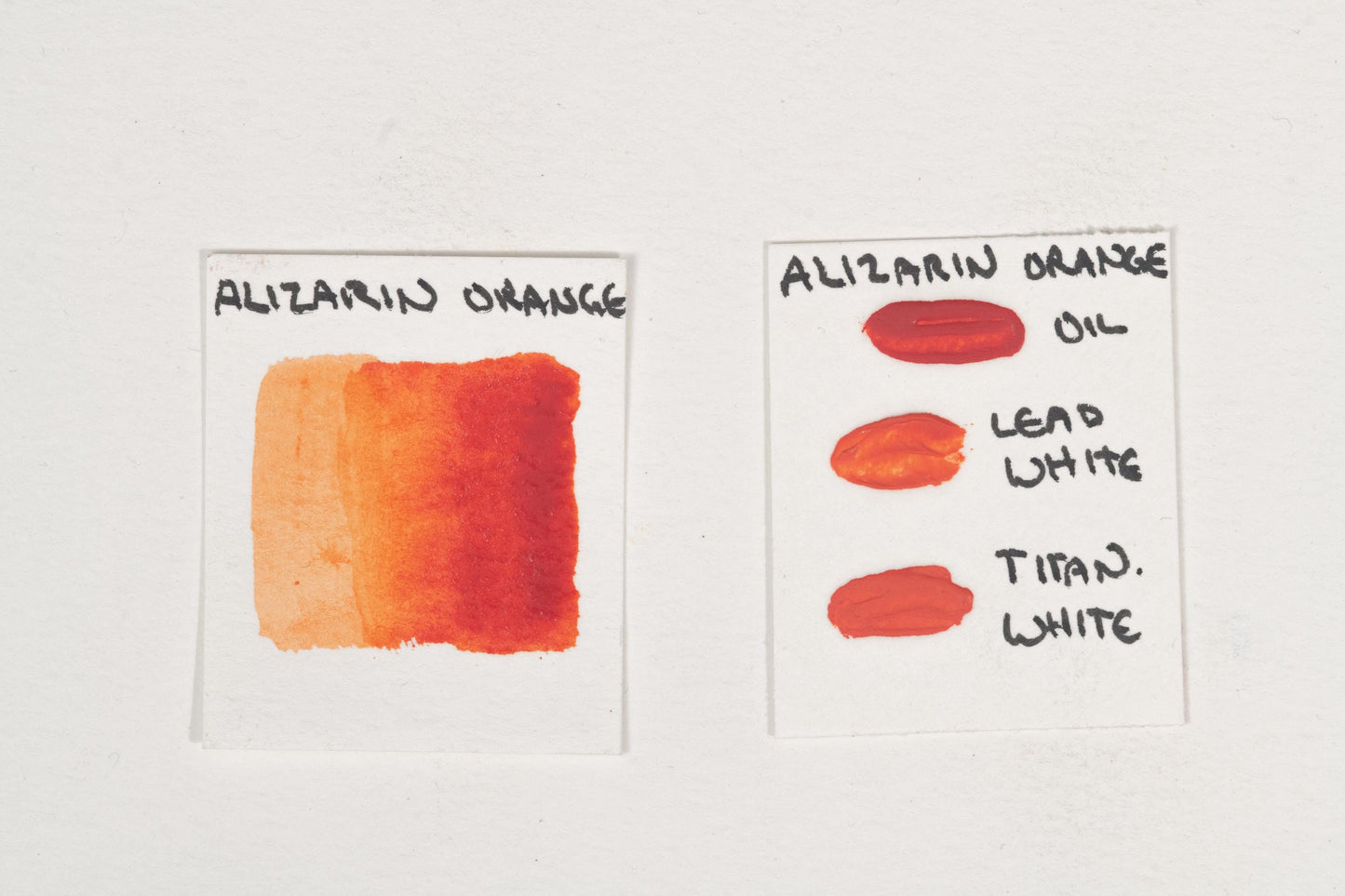Alizarin Orange
Alizarin Orange
Couldn't load pickup availability
Share


Description
Alizarin Orange is a synthetic pigment that replicates the main hue of natural madder lake with greater intensity. First synthesized in 1869 from anthraquinone derivatives, alizarin provided a more stable and affordable alternative to madder, which had been extracted from the roots of Rubia tinctorum for centuries. This pigment exhibits excellent transparency, making it ideal for glazing techniques. It is heated to high temperatures, which alters the structure and produces a superbly intense, warm orange .
Compared to natural madder lake, synthetic alizarin offers more consistent color, improved availability, and enhanced resistance to fading. It is widely used in oil painting, watercolor, and tempera due to its vibrant tones and ability to create luminous, layered effects.
Alizarin remains an important historical pigment while serving as a foundation for modern synthetic reds in fine art and textile dyeing.
History
Ancient and Medieval Periods: Before synthetic alizarin, natural madder was used in Egyptian textiles, Roman frescoes, and medieval manuscripts. Its deep red hues were highly prized for dyeing fabrics and producing luminous reds in illuminated manuscripts.
Renaissance to 19th Century: Artists such as Rembrandt and Vermeer employed madder lake in oil painting for its warm undertones and excellent glazing properties.
Industrial Synthesis (1869): The development of synthetic alizarin by Graebe and Liebermann marked a turning point in the pigment industry, replacing natural madder as the primary red dye and artist's pigment.
20th and 21st Centuries: Although synthetic alizarin is still used, modern lightfast reds such as quinacridone have largely replaced it in professional painting due to alizarin's moderate fading over time.
Health and Safety
Precautions:
Keep out of reach of children and pets.
Do not consume.
Not for cosmetic or food usage.
Do not spray apply.
For further health information, contact a poison control center.
Use care when handling dry pigments and avoid dust formation.
Use particular caution with fibrous, fine, or toxic pigments.
Do not eat, drink, or smoke near dry pigments.
Avoid breathing in pigment dust and use a NIOSH-certified dust respirator with sufficient rating for dry pigment.
Wash hands immediately after use or handling.
If dust is likely, always wear protective clothing to keep out of eyes, lungs, and off skin, as well as keep the area ventilated.
This product may contain chemicals known by the State of California to cause cancer, birth defects, or reproductive harm.
Warnings and bottle information are abbreviated.
Pigment Information
Pigment Type: Synthetic
Source: Anthraquinone derivative
Country of Origin: Germany (original synthesis)
Suitable Mediums: Watercolor, Oil, Tempera, Acrylic
Lightfastness: Good to Acceptable (moderate fading in strong light)
Opacity: Semi-translucent
Other Names: Alizarin, Alizarin Lake, Transparent Orange


